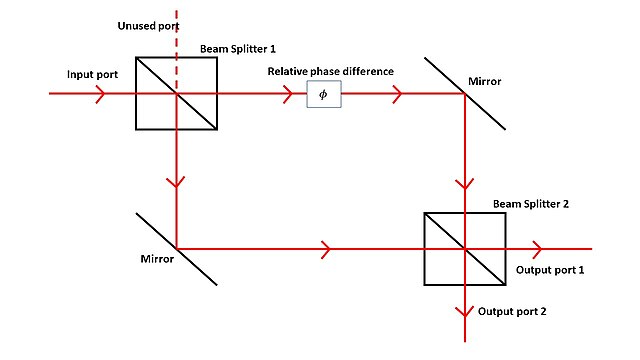Wave–particle duality is the concept in quantum mechanics that quantum entities exhibit particle or wave properties according to the experimental circumstances. It expresses the inability of the classical concepts such as particle or wave to fully describe the behavior of quantum objects. During the 19th and early 20th centuries, light was found to behave as a wave, and then later discovered to have a particulate character, whereas electrons were found to act as particles, and then later discovered to have wavelike aspects. The concept of duality arose to name these contradictions.
Left half: schematic setup for electron double-slit experiment with masking; inset micrographs of slits and mask; Right half: results for slit 1, slit 2 and both slits open.
Interferometer schematic diagram
Quantum mechanics is a fundamental theory in physics that describes the behavior of nature at and below the scale of atoms. It is the foundation of all quantum physics, which includes quantum chemistry, quantum field theory, quantum technology, and quantum information science.
Max Planck is considered the father of the quantum theory.
The 1927 Solvay Conference in Brussels was the fifth world physics conference.




